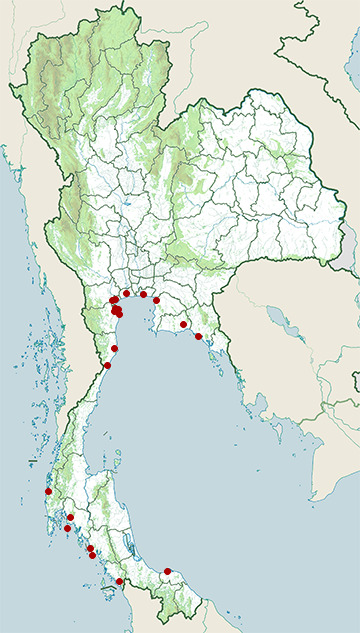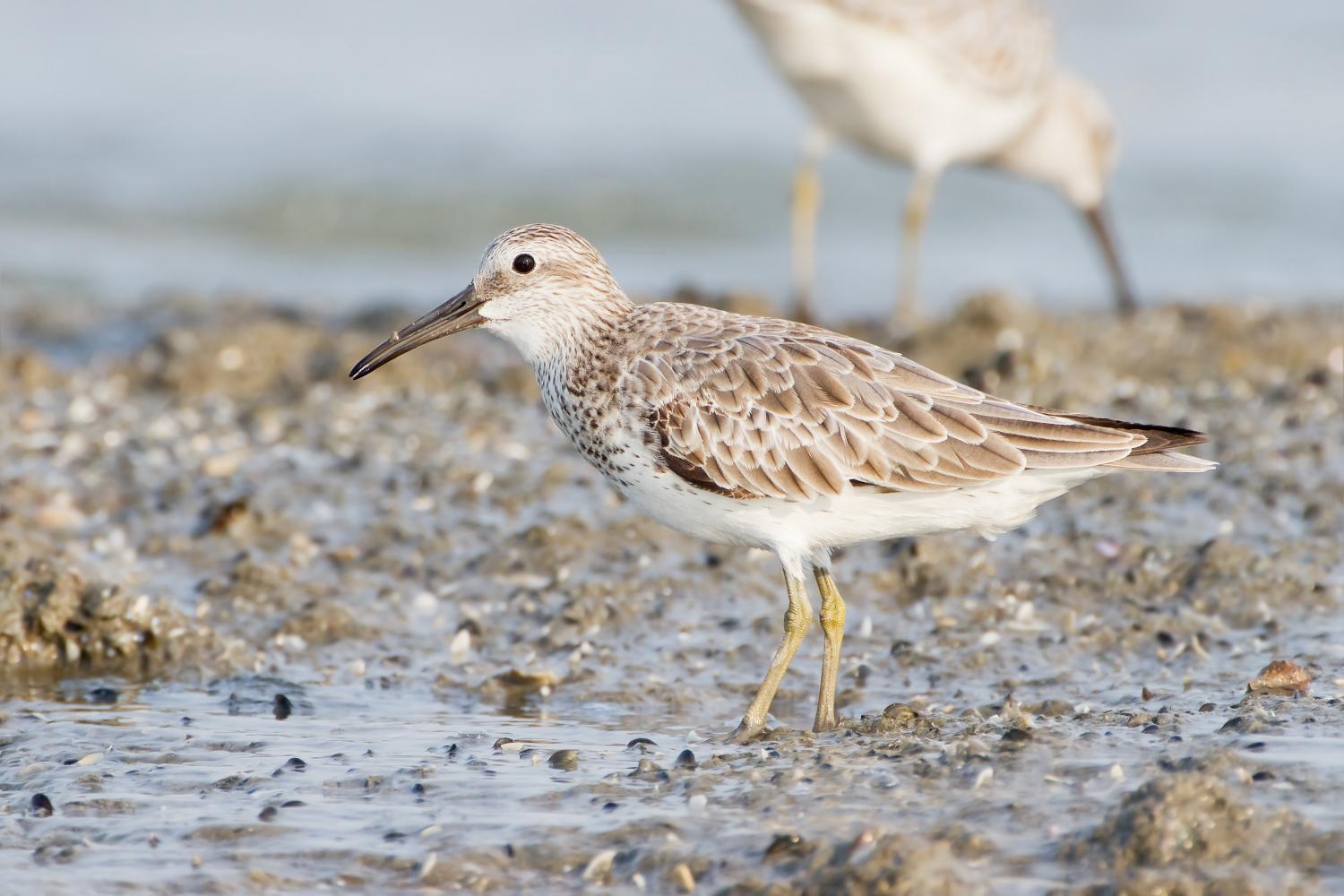Species of Thailand
Great knot
Calidris tenuirostris
Thomas Horsfield, 1821
In Thai: นกน็อตใหญ่
The great knot (Calidris tenuirostris) is a small wader. It is the largest of the calidrid species. The genus name is from Ancient Greek kalidris or skalidris, a term used by Aristotle for some grey-coloured waterside birds. The specific tenuirostris is from Latin tenuis "slender" and rostrum "bill".
Distribution
Their breeding habitat is tundra in northeast Siberia. They nest on the ground laying about four eggs in a ground scrape. They are strongly migratory wintering on coasts in southern Asia through to Australia. This species forms enormous flocks in winter. The species is recorded in low numbers in western Alaska most years, and has occurred as a vagrant in British Columbia, Oregon, West Virginia, and Maine.
Description
This species has short dark legs and a medium-length thin dark bill. Breeding adults have mottled greyish upperparts with some rufous feathering. The face, throat and breast are heavily spotted black, and there are also some streaks on the rear belly. In winter the plumage becomes uniformly pale grey above.
This bird is closely related to the more widespread red knot. In breeding plumage, the latter has a distinctive red face, throat and breast. In other plumages, the great knot can be identified by its larger size, longer bill, deeper chest, and the more streaked upperparts.
These birds forage on mudflats and beaches, probing or picking up food by sight. They mainly eat molluscs and insects.
The great knot is one of the species to which the Agreement on the Conservation of African-Eurasian Migratory Waterbirds (AEWA) applies.
Australia
Great knot are not listed as threatened on the Environment Protection and Biodiversity Conservation Act 1999.
State of Victoria, Australia
- Great knot are listed as threatened on the Victorian Flora and Fauna Guarantee Act (1988). Under this Act, an Action Statement for the recovery and future management of this species has not been prepared.
- On the 2013 advisory list of threatened vertebrate fauna in Victoria, this species is listed as endangered.
This article uses material from Wikipedia released under the Creative Commons Attribution-Share-Alike Licence 3.0. Eventual photos shown in this page may or may not be from Wikipedia, please see the license details for photos in photo by-lines.
Category / Seasonal Status
Wiki listed status (concerning Thai population): Mainly passage migrant, endangered
BCST Category: Recorded in an apparently wild state within the last 50 years
BCST Seasonal status: Non-breeding visitor
Scientific classification
- Kingdom
- Animalia
- Phylum
- Chordata
- Class
- Aves
- Order
- Charadriiformes
- Family
- Scolopacidae
- Genus
- Calidris
- Species
- Calidris tenuirostris
Common names
- English: Great knot
- French: Bécasseau d'anadyr
- Thai: นกน็อตใหญ่
Photos
Please help us review the bird photos if wrong ones are used. We can be reached via our contact us page.
Range Map

- Amphawa District, Samut Songkhram
- Ban Laem District, Phetchaburi
- Bang Pu Recreation Centre
- Chanthaburi Coast
- Hat Chao Mai National Park
- Khao Sam Roi Yot National Park
- Klaeng District, Rayong
- Ko Libong
- Laem Pak Bia
- Mueang Chonburi District, Chonburi
- Mueang Krabi District, Krabi
- Mueang Pattani District, Pattani
- Mueang Phetchaburi District, Phetchaburi
- Mueang Prachuap Khiri Khan District, Prachuap Khiri Khan
- Mueang Samut Sakhon District, Samut Sakhon
- Mueang Samut Songkhram District, Samut Songkhram
- Mueang Satun District, Satun
- Pak Thale
- Phi Phi Islands
- Takua Pa District, Phang Nga




